GitHub Copilot Certification
Introduction
Copilots Strengths and Limitations
Explore how GitHub Copilot, the AI-driven coding assistant powered by OpenAI’s large language models, can streamline your development workflow—and understand its practical constraints.
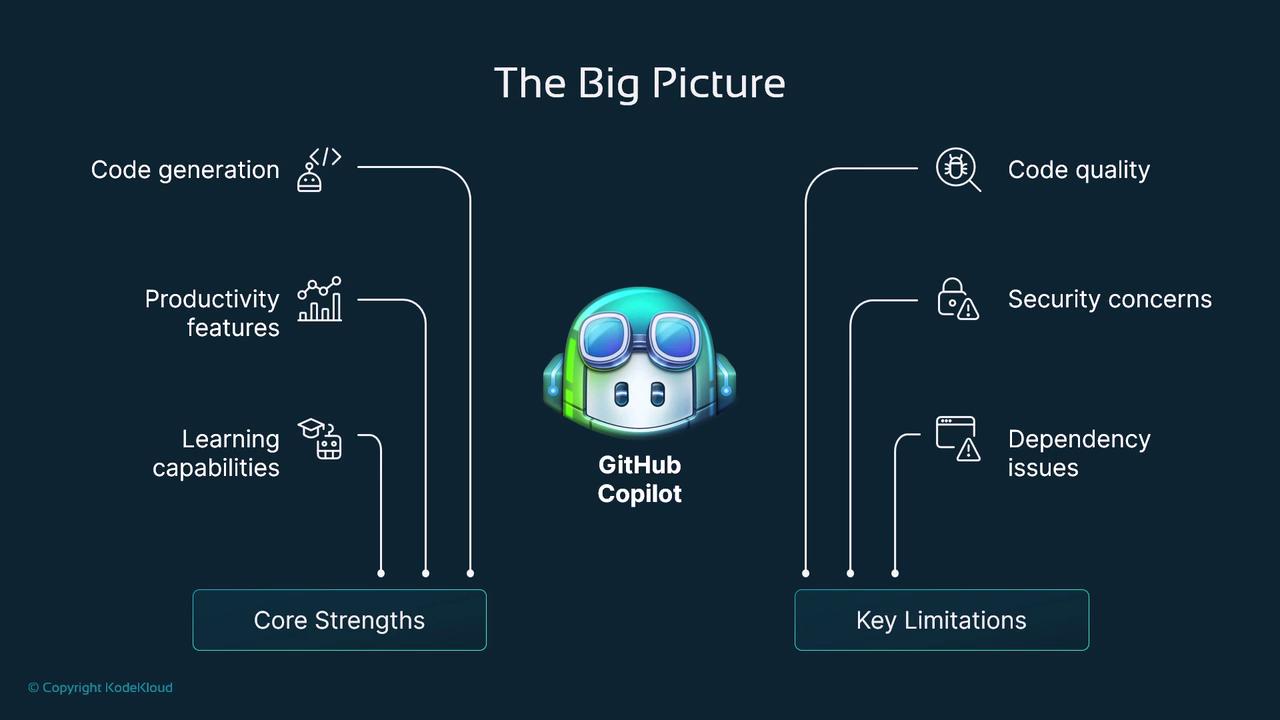
Core Strengths
GitHub Copilot supercharges your coding speed by generating boilerplate and repetitive code snippets. It analyzes your current context to provide:
- Real-time code completion based on surrounding code
- Multi-language support for over 200 programming languages
- Documentation and comment generation inline with your code
- Unit test suggestions tailored to your functions
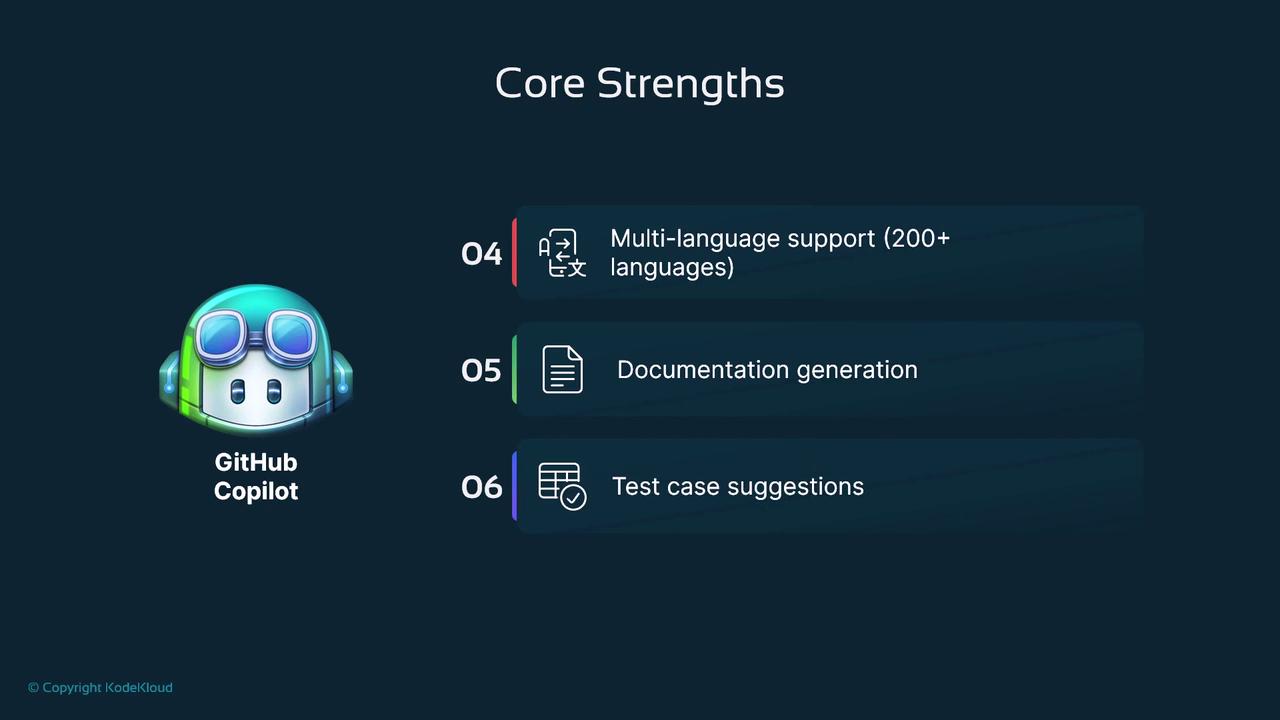
Daily Impact on Workflow
These features translate into higher productivity:
- Context-aware suggestions as you type
- Automatic recognition of common API patterns
- Offloading repetitive tasks to AI
- Enforcing consistent coding style
- Seamless integration with IDEs like VS Code and JetBrains
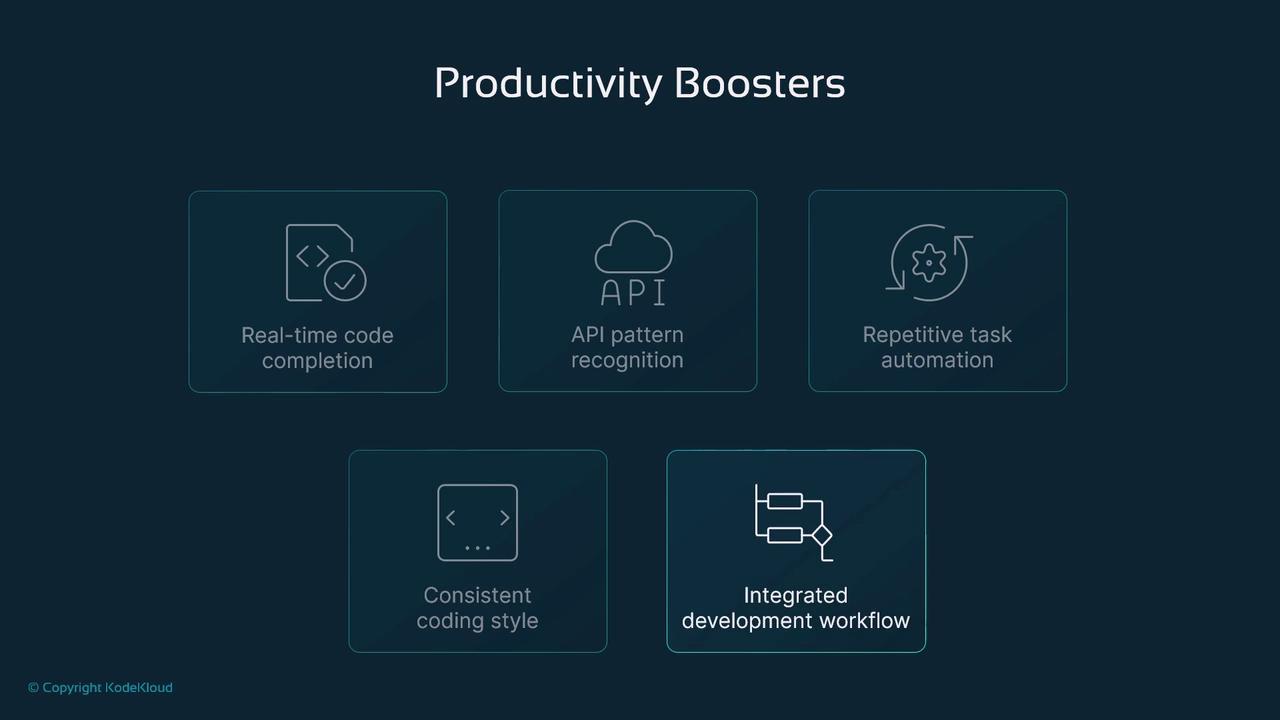
Learning and Collaboration
Copilot doubles as a knowledge-sharing tool:
- Pattern Recognition: Identifies and applies best practices
- Alternative Solutions: Suggests multiple approaches to a problem
- Team Consistency: Promotes standard coding conventions across your organization
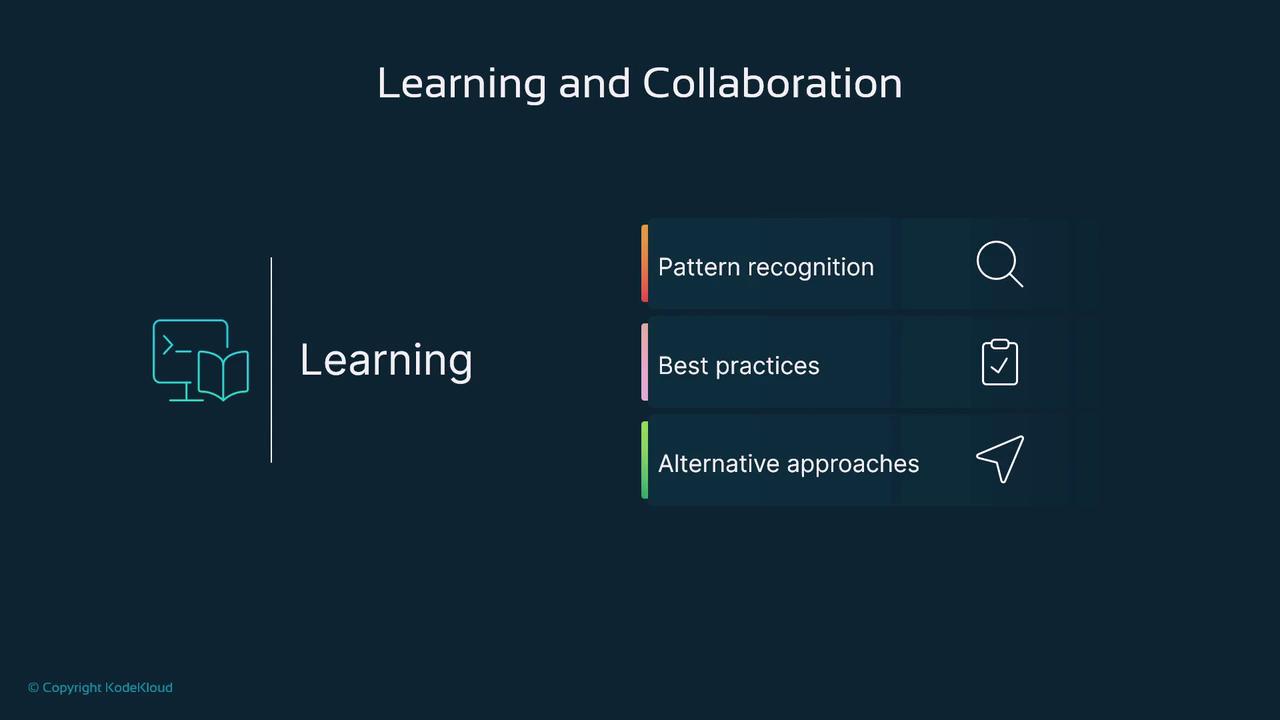
Broader Benefits
Across the entire development lifecycle, Copilot delivers:
| Benefit | Impact |
|---|---|
| Increased Productivity | Ship features faster under tight deadlines |
| Reduced Cognitive Load | Let AI handle routine boilerplate |
| Accelerated Prototyping | Explore new ideas without manual setup |
| Integrated Documentation | Keep docs up to date alongside code |
| Continuous Learning | Absorb new coding patterns suggested by AI |
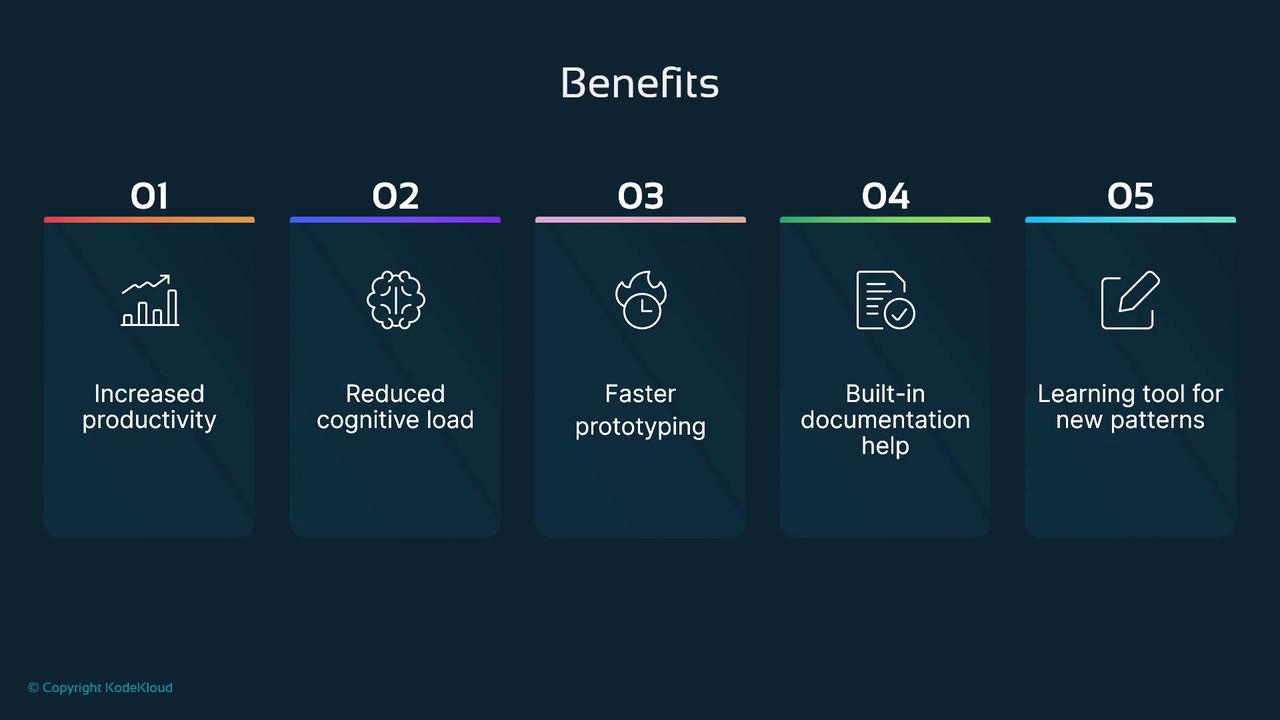
Limitations
While powerful, Copilot has several constraints that require developer oversight.
Performance Constraints
- Requires stable internet connectivity
- May lag on very large codebases
- Consumes significant compute resources for inference
- API rate limits can throttle suggestions
Note
If you experience latency, try limiting the scope of the active file or using local indexing features in your IDE.
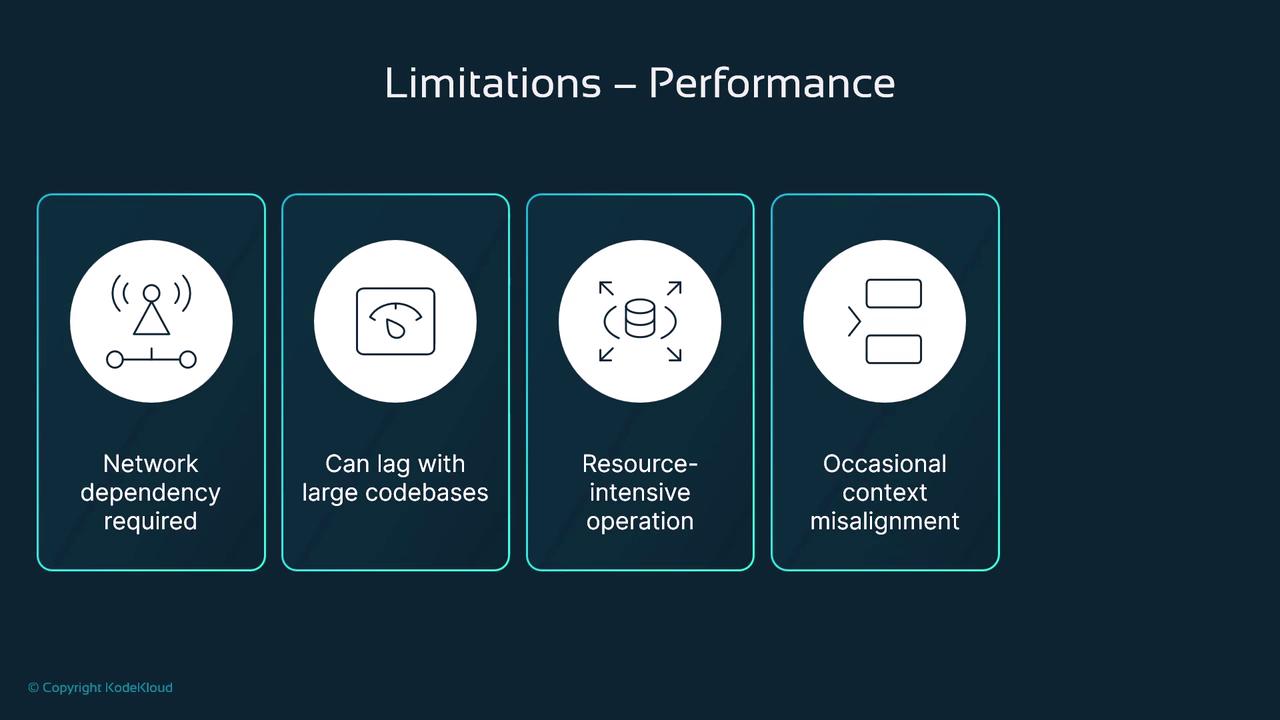
Code Quality Concerns
- Possible reliance on outdated libraries or anti-patterns
- Suggestions may introduce security vulnerabilities
- Generic code that may not fit project-specific optimizations
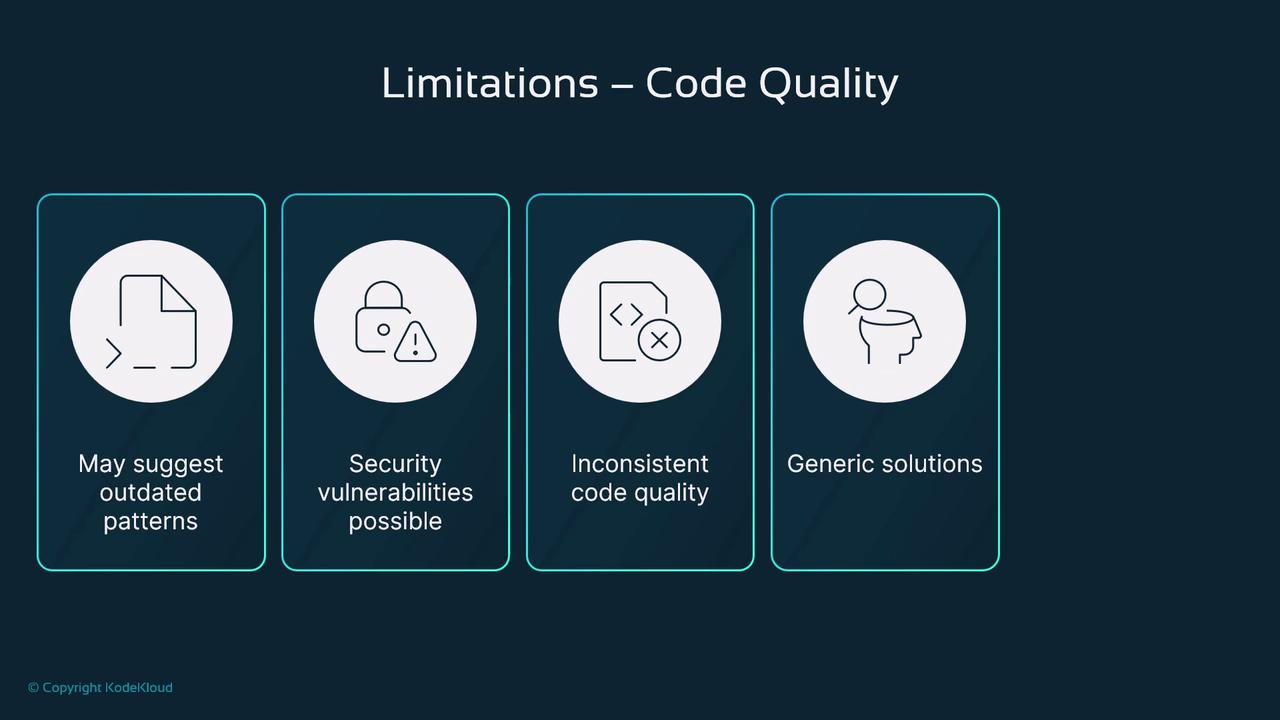
Security Considerations
Warning
Your code context is sent to remote servers; review organizational policies on data privacy and compliance before enabling Copilot in enterprise environments.
- Risk of exposing proprietary or sensitive code
- Limited built-in vulnerability scanning
- Dependency on cloud services may conflict with compliance requirements
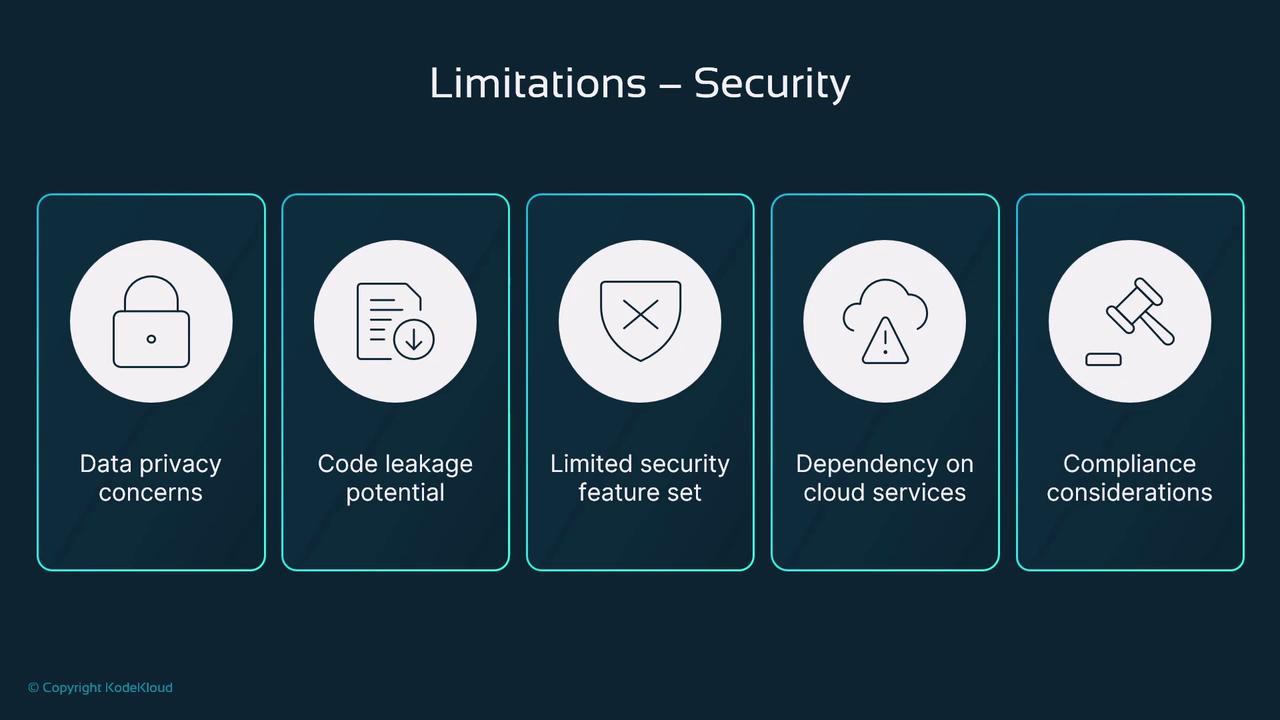
Best Practices
Follow these guidelines to get the most from Copilot:
| Best Practice | Description |
|---|---|
| Write Clear, Targeted Comments | Guide Copilot to understand your intent |
| Use Descriptive Names | Improve readability and suggestion accuracy |
| Break Tasks into Chunks | Keep prompts focused and context small |
| Review Generated Code | Always validate before merging |
| Learn from Suggestions | Analyze AI patterns to enhance your skills |
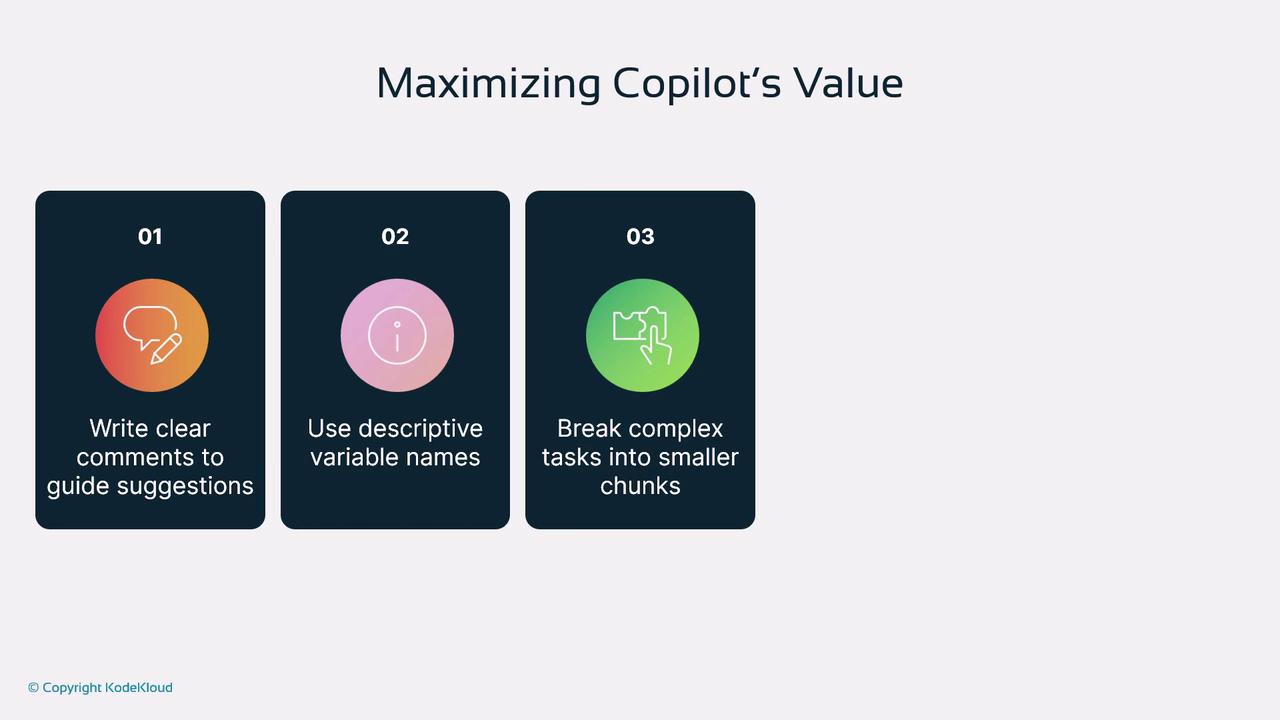
Common Pitfalls
Avoid these traps to maintain code quality:
| Pitfall | Potential Risk |
|---|---|
| Over-reliance on AI | Loss of deep understanding of logic |
| Accepting Without Review | Bugs and security issues slip into your codebase |
| Complex Algorithm Coverage | Reduced accuracy on advanced algorithmic problems |
| Ignoring Security Checks | Introduced vulnerabilities from auto-generated snippets |

Key Takeaways
Maximize GitHub Copilot by balancing AI-driven automation with human oversight:
- Use Copilot for boilerplate and repetitive tasks
- Maintain rigorous code reviews and security audits
- Focus on use cases where Copilot excels, such as prototyping
- Continuously assess its impact on your development process
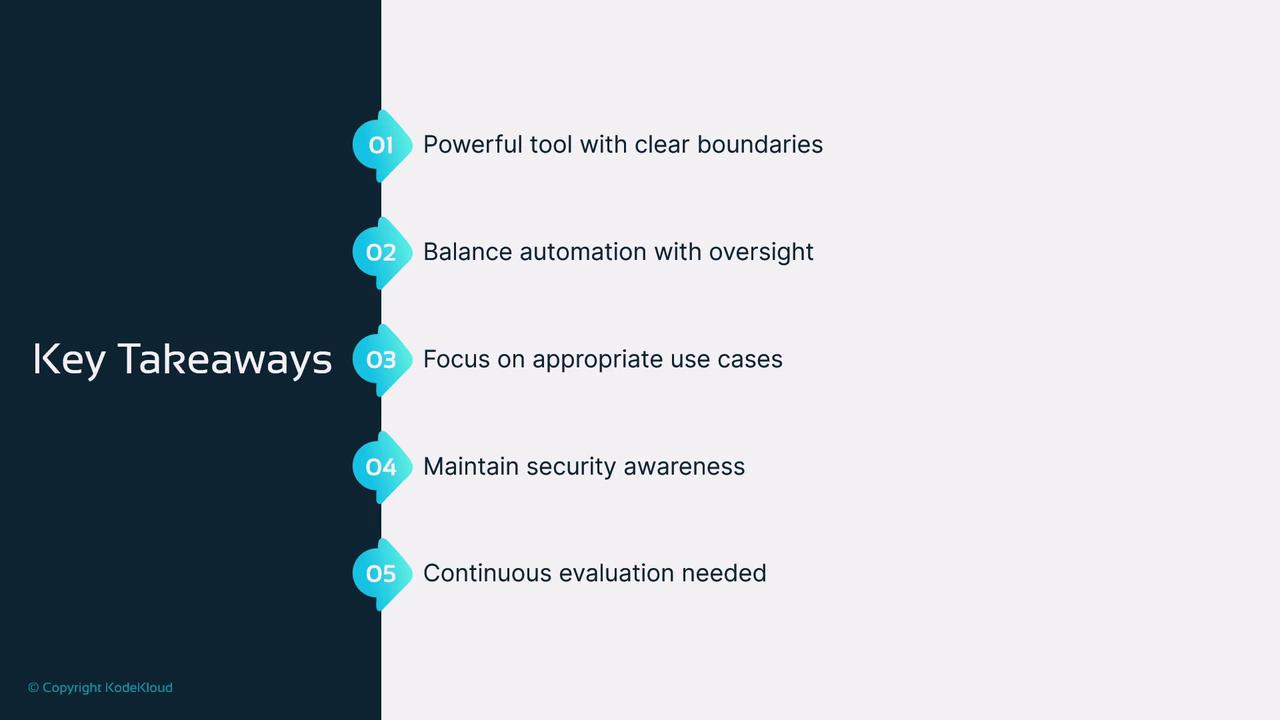
References
Watch Video
Watch video content